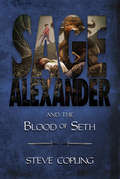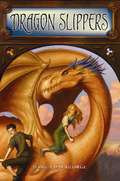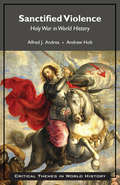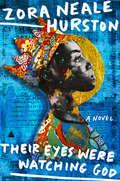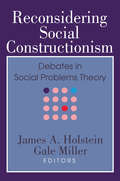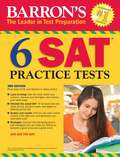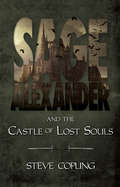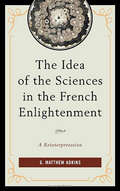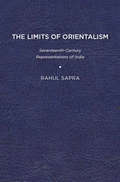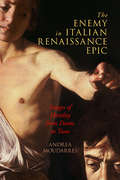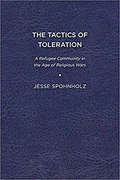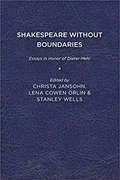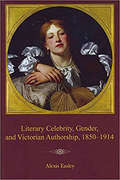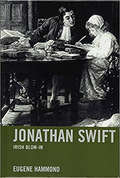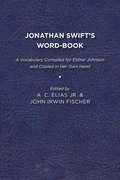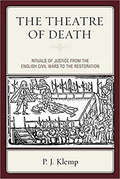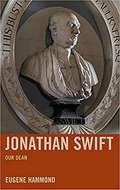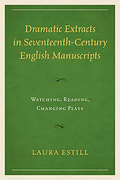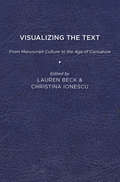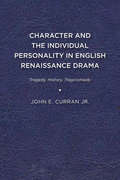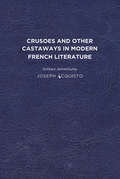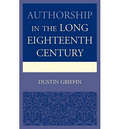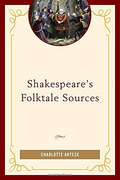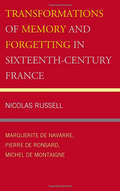- Table View
- List View
Sage Alexander and the Blood of Seth (Sage Alexander #2)
by Steve Copling&“A gripping fantasy and adventure with demons, angels, and so much more&”—second in the series that&’s the basis for the TigerBeat TV show (Kids&’ Book Buzz). For Sage Alexander, life was forever changed when he realized that the Angelic embodiments he could always see, the magnificent heavenly powers that he possessed, and the destiny he had always been told he had to fulfill were all real and true, and that his promised powers were necessary to defeat the Seven Princes of Hell. After saving his father from the clutches of Greed incarnate and destroying Prince Mammon, Sage has come to realize his place within the Angelic Council and the world as a protector to humanity, though the prospect is daunting. Sage has only just reunited his family back on earth, however, when Belphegor, the Prince of Sloth, takes Sage&’s little brother, Nick, as revenge for the fall of Mammon. Sage must now venture forth yet again into that dark wasteland mortals call Hell and retrieve what is his. Will he continue on his path to destroy the seven embodiments of sin, or will he be thwarted by Sloth, and leave humanity to evil&’s devices? Join Sage, Elsbeth, Ronan, and more in the next chapter of this treacherous journey.&“[An] epic journey of a reluctant hero who will try to thwart the Seven Princes of Hell . . . Clear shelf space to invest in the whole series that includes mythology as found in the Percy Jackson series combined with a quest like that of Eragon.&” —VOYA&“A deftly written fantasy saga.&” —Midwest Book Review
Dragon Slippers (Dragon Slippers #1)
by Jessica Day GeorgeMany stories tell of damsels in distress, who are rescued from the clutches of fire-breathing dragons by knights in shining armor, and swept off to live happily ever after. Unfortunately, this is not one of those stories. True, when Creel's aunt suggests sacrificing her to the local dragon, it is with the hope that the knight will marry Creel and that everyone (aunt and family included) will benefit handsomely. Yet it's Creel who talks her way out of the dragon's clutches. And it's Creel who walks for days on end to seek her fortune in the king's city with only a bit of embroidery thread and a strange pair of slippers in her possession. But even Creel could not have guessed the outcome of this tale. For in a country on the verge of war, Creel unknowingly possesses not just any pair of shoes, but a tool that could be used to save her kingdom or destroy it.
Sanctified Violence: Holy War in World History (Critical Themes in World History)
by Alfred J. Andrea Andrew Holt"This rich and engaging book looks at instances of sanctified violence, the holy wars related to religion. It covers it all, from ancient to present day, including examples of warfare among Sikhs, Hindus and Buddhists, as well as Christians, Jews and Muslims. It is a comprehensive and readable overview that provides a lively introduction to the subject of holy war in its broadest sense—as &‘sanctified violence&’ in the service of a god or ideology. It is certain to be a useful companion in the classroom, and a boon to anyone fascinated by the dark attraction of religion and violence." —Mark Juergensmeyer, University of California, Santa BarbaraContents:Introduction: What Is Holy War?Chapter 1: Holy Wars in Mythic Time, Holy Wars as Metaphor, Holy Wars as RitualChapter 2: Holy Wars of Conquest in the Name of a DeityChapter 3: Holy Wars in Defense of the SacredChapter 4: Holy Wars in Anticipation of the Millennium Epilogue: Holy Wars Today and TomorrowAlso included are a description of the Critical Themes in World History series, Preface, index, and suggestions for further reading.
Their Eyes Were Watching God: A Novel (P. S. Ser. #60)
by Zora Neale Hurston<P>Janie is an independent African American woman who grows up with a grandmother who is determined to keep her from the sexual and racial violence of her own past. <P>Janie's first marriage is filled with hard labor, so she runs off with Joe, a handsome and wealthy storekeeper. <P>Joe becomes mayor of the all-black town of Eatonville, Florida, but Janie is still unfulfilled by her new relationship. <P>After Joe's death, she lives with another man who brings passion into her world, if not stability. <P>Soon tragedy strikes and Janie learns to face it head-on with optimism and strength. <P>[This text is listed as an example that meets Common Core Standards in English language arts in grades 11-12 at http://www.corestandards.org.]
Reconsidering Social Constructionism: Social Problems and Social Issues (Social Problems And Social Issues Ser.)
by Gale MillerWith the impact of social interactionist and ethnographic methodology twenty-five years ago, the research agenda in social problems began to shift its focus, giving rise to the Social Constructionism movement. The present volume and the related shorter text, Constructionist Controversies, review the substantial contributions made by social constructionist theorists over that period, as well as recent debates about the future of the perspective. These contributions redefine the purpose and central questions of social problems theory and articulate a research program for analyzing social problems as social constructions. A generation of theorists has been trained in the constructionist perspective and has extended it through numerous analyses of diverse aspects of contemporary social life.The debates in this volume pose fundamental questions about the major assumptions of the perspective, the ways in which it is practiced, and the purposes of social problems theory. Their point of departure is Ibarra and Kitsuse's essay, cutting new theoretical ground in calling for ""investigating vernacular resources, especially rhetorical forms, in the social problems process.""Contributors are forceful proponents both within and outside of the social constructionist community, who take a broad array of positions on the current state of social problems theory and on the rhetorical forms that need exploring. They also lay down the general lines for diverse and often competing programs for the future development of the constructionist agenda.
AP Psychology Flashcards (Barron's Test Prep)
by Robert McEntarffer Ph.D. Allyson J. Weseley Ed.D.Learn the most frequently tested individuals, terms, and concepts from the AP Psychology course framework anywhere, anytime with this digital format that enhances memorization! The College Board has announced that there are May 2021 test dates available from May 3-7 and May 10-14, 2021. Barron&’s AP Psychology Flashcards includes 500 digital flashcards that cover the most frequently tested individuals, terms, and concepts from the following nine units of the AP Psychology course framework: Scientific Foundations of PsychologyBiological Bases of BehaviorSensation and PerceptionLearningCognitive PsychologyDevelopmental PsychologyMotivation, Emotion, and PersonalityClinical PsychologySocial PsychologyDigital flashcard features:Access anywhere: study on all devices, including mobile--available online and offlineFlip functionality: a simple click flips cards from front to backRandom select: review cards in a random order rather than sequentially Looking for content review plus full-length practice tests? Check out Barron&’s AP Psychology Premium with 6 Practice Tests.
6 SAT Practice Tests (Barron's Test Prep)
by Philip Geer Ed.M. Stephen A. ReissCollege-bound students will find intensive test-taking practice for the all-important SAT in this latest edition. They’ll find everything they need to ace the test, including:Six full-length practice exams similar in length, structure, question type, and degree of difficulty to the new SAT All questions answered and explained Self-appraisal information for scoring the SAT essay questionTest-taking tips and strategies that will help students use this book to their best advantage to maximize their scoresThis book offers excellent SAT test preparation when used alone, and also makes a fine companion volume for test takers who purchase Barron’s SAT, 29th Edition (978-1-4380-0998-8).
Sage Alexander and the Castle of Lost Souls (Sage Alexander #3)
by Steve CoplingThird in the &“epic journey of a reluctant hero who will try to thwart the Seven Princes of Hell&”—the series that&’s the basis for the TigerBeat TV show (VOYA). When an Indiana orphan makes a telepathic connection with Sage Alexander&’s great-grandfather, Arthur, whose soul has been missing for more than 150 years, it gets the attention of the Angelic Response Council. Rescuing Arthur Alexander&’s soul, which is trapped within a dragonhead of Remus, a mythical Typhon who resides within the Prince of Envy&’s Dark Realm castle, will be a deadly task. Compounding the problem is Sage&’s mentally unstable uncle, who lives life on the edge of darkness. When Sage&’s team of battle-hardened warriors wage war to reunite Arthur&’s body and soul, the fury of a legendary beast makes their escape a near impossibility.Praise for the Sage Alexander series &“Copling plays delightfully with myths and history, creating a vast world of literature, knowledge, and belief. This novel was perfect for my geeky side!&” —San Francisco Book Review &“A gripping fantasy and adventure with demons, angels, and so much more.&” —Kids&’ Book Buzz &“An intricate, adventurous novel . . . Sage&’s journey, personal in saving his father and noble in saving the world, is worth rooting for.&” —Foreword Reviews
The Idea of the Sciences in the French Enlightenment: A Reinterpretation (G - Reference, Information And Interdisciplinary Subjects Ser.)
by G. Matthew AdkinsThis book traces the development of the idea that the sciences were morally enlightening through an intellectual history of the secrétaires perpétuels of the French Royal Academy of Sciences and their associates from the mid-seventeenth century to the end of the eighteenth century. Academy secretaries such as Fontenelle and Condorcet were critical to the emergence of a central feature of the narrative of Enlightenment in that they encouraged the notion that the “philosophical spirit” of the Scientific Revolution, already present among the educated classes, should guide the necessary reformation of society and government according to the ideals of scientific reasoning. The Idea of the Sciences also tells an intellectual history of political radicalization, explaining especially how the marquis de Condorcet came to believe that the sciences could play central a role in guiding the outcome of the Revolution of 1789. Published by University of Delaware Press. Distributed worldwide by Rutgers University Press.
The Limits of Orientalism: Seventeenth-Century Representations of India
by Rahul SapraThe Limits of Orientalism: Seventeenth-Century Representations of India challenges the recent postcolonial readings of European, predominantly English, representations of India in the seventeenth century. Following Edward Said’s discourse of “Orientalism,” most postcolonial analyses of the seventeenth-century representations of India argue that the natives are represented as barbaric or exotic “others,” imagining these representations as products of colonial ideology. Such approaches tend to offer a homogeneous idea of the “native” and usually equate it with the term “Indian.” Sapra, however, argues that instead of representing all natives as barbaric “others,” the English drew parallels, especially between themselves and the Mughal aristocracy, associating with them as partners in trade and potential allies in war. While the Muslims are from the outset largely portrayed as highly civilized and cultured, early European writers tended to be more conflicted with Hindus, their first highly negative views undergoing a transformation that brings into question any straightforward Orientalist reading of the texts and anticipates the complexity of later representations of the indigenous peoples of the sub-continent. Sapra’s theoretical and methodological approach is influenced by such writers as Aijaz Ahmad and Denis Porter, who have highlighted powerful alternatives to Said’s discourse of “Orientalism.” Sapra historicizes European representations of the indigenous to draw attention to the contrasting approaches of the Portuguese, the Dutch and the English in relation to seventeenth-century India, effectively undermining comfortable notions of a homogenous “West.” Unlike the Portuguese, for whom the idea of a dynasty and the conversion of heathens went hand in hand with the idea of trade, for the Dutch and the English the primary consideration was commercial. In keeping with the commercial approach of the English East India Company, most English travelers, instead of representing the Muslims as barbaric “others,” highlight the compatibility between the two cultures and consistently praise the Mughal empire for its religious tolerance. In the representations of the Hindus, Sapra demonstrates that most writers, even while denigrating the Hindu religion, appreciate the civilized society of the Hindus. Moreover, in the representations of sati or widow-burning, a distinction needs to be made between the patriarchal and the Orientalist points of views, which are at variance with each other. The tension between the patriarchal and the Orientalist positions challenges Gayatri Chakravorty Spivak’s analysis of sati in “Can the Subaltern Speak?” which has become the standard model for most postcolonial appraisals of European representations of sati. The book highlights the lacuna in postcolonial readings by providing access to selections of commonly unavailable early-modern writings by Thomas Roe, Edward Terry, Henry Lord, Thomas Coryate, Alexander Hamilton and other the records of the East India Company, which makes the book vital for students of theory, European and South-Asian history, and Renaissance literatures. Published by University of Delaware Press. Distributed worldwide by Rutgers University Press.
The Enemy in Italian Renaissance Epic: Images of Hostility from Dante to Tasso (The Early Modern Exchange)
by Andrea MoudarresIn The Enemy in Italian Renaissance Epic, Andrea Moudarres examines influential works from the literary canon of the Italian Renaissance, arguing that hostility consistently arises from within political or religious entities. In Dante’s Divina Commedia, Luigi Pulci’s Morgante, Ludovico Ariosto’s Orlando Furioso, and Torquato Tasso’s Gerusalemme Liberata, enmity is portrayed as internal, taking the form of tyranny, betrayal, and civil discord. Moudarres reads these works in the context of historical and political patterns, demonstrating that there was little distinction between public and private spheres in Renaissance Italy and, thus, little differentiation between personal and political enemies. Published by University of Delaware Press. Distributed worldwide by Rutgers University Press.
The Tactics of Toleration: A Refugee Community in the Age of Religious Wars
by Jesse SpohnholzThe Tactics of Toleration examines the preconditions and limits of toleration during an age in which Europe was sharply divided along religious lines. During the Age of Religious Wars, refugee communities in borderland towns like the Rhineland city of Wesel were remarkably religiously diverse and culturally heterogeneous places. Examining religious life from the perspective of Calvinists, Lutherans, Mennonites, and Catholics, this book examines how residents dealt with pluralism during an age of deep religious conflict and intolerance. Based on sources that range from theological treatises to financial records and from marriage registries to testimonies before secular and ecclesiastical courts, this project offers new insights into the strategies that ordinary people developed for managing religious pluralism during the Age of Religious Wars. Historians have tended to emphasize the ways in which people of different faiths created and reinforced religious differences in the generations after the Reformation’s break-up of Christianity, usually in terms of long-term historical narratives associated with modernization, including state building, confessionalization, and the subsequent rise of religious toleration after a century of religious wars. In contrast, Jesse Spohnholz demonstrates that although this was a time when Christians were engaged in a series of brutal religious wars against one another, many were also learning more immediate and short-term strategies to live alongside one another. This book considers these “tactics for toleration” from the vantage point of religious immigrants and their hosts, who learned to coexist despite differences in language, culture, and religion. It demands that scholars reconsider toleration, not only as an intellectual construct that emerged out of the Enlightenment, but also as a dynamic set of short-term and often informal negotiations between ordinary people, regulating the limits of acceptable and unacceptable behavior. Published by University of Delaware Press. Distributed worldwide by Rutgers University Press.
Shakespeare without Boundaries: Essays in Honor of Dieter Mehl
by Christa Jansohn Stanley Wells Ann Jennalie Cook Paul Edmondson Phyllis Rackin Grace Ioppolo R. A. Foakes Brian Gibbons Alan Brissenden Peter Holland Ann Thompson John O. Thompson Bruce R. Smith Alexander Shurbanov Catherine Belsey Martin Orkin Piero Boitani David Bevington Hugh Macrae Richmond Chee-Seng Lim Werner Habicht Marta Gibinska Jesús Tronch Catherine M.S. Alexander Adrian Poole Georgianna Ziegler Velma Bourgeois RichmondShakespeare without Boundaries: Essays in Honor of Dieter Mehl offers a wide-ranging collection of essays written by an international team of distinguished scholars who attempt to define, to challenge, and to erode boundaries that currently inhibit understanding of Shakespeare, and to exemplify how approaches that defy traditional bounds of study and criticism may enhance understanding and enjoyment of a dramatist who acknowledged no boundaries in art. The Volume is published in tribute to Professor Dieter Mehl, whose critical and scholarly work on authors from Chaucer through Shakespeare to D. H. Lawrence has transcended temporal and national boundaries in its range and scope, and who, as Ann Jennalie Cook writes, has contributed significantly to the erasure of political boundaries that have endangered the unity of German literary scholarship and, more broadly, through his work for the International Shakespeare Association, to the globalization of Shakespeare studies. Published by University of Delaware Press. Distributed worldwide by Rutgers University Press.
Literary Celebrity, Gender, and Victorian Authorship, 1850-1914
by Alexis EasleyThis study examines literary celebrity in Britain from 1850 to 1914. Through lively analysis of rare cultural materials, Easley demonstrates the crucial role of the celebrity author in the formation of British national identity. As Victorians toured the homes and haunts of famous writers, they developed a sense of shared national heritage. At the same time, by reading sensational accounts of writers’ lives, they were able to reconsider conventional gender roles and domestic arrangements. As women were featured in interviews and profiles, they were increasingly associated with the ephemerality of the popular press and were often excluded from emerging narratives of British literary history, which defined great literature as having a timeless appeal. Nevertheless, women writers were able to capitalize on celebrity media as a way of furthering their own careers and retelling history on their own terms. Press attention had a more positive effect on men’s literary careers since they were expected to assume public identities; however, in some cases, media exposure had the effect of sensationalizing their lives, bodies, and careers. With the development of proto-feminist criticism and historiography, the life stories of male writers were increasingly used to expose unhealthy domestic relationships and imagine ideal forms of British masculinity. The first section of Literary Celebrity explores the practice of literary tourism in Victorian Britain, focusing specifically on the homes and haunts of Charles Dickens, Christina Rossetti, George Eliot, Elizabeth Barrett Browning, and Harriet Martineau. This investigation incorporates analysis of fascinating cultural texts, including maps, periodicals, and tourist guidebooks. Easley links the practice of literary tourism to a variety of cultural developments, including nationalism, urbanization, spiritualism, the women’s movement, and the expansion of popular print culture. The second section provides fresh insight into the ways that celebrity culture informed the development of Victorian historiography. Easley demonstrates how women were able to re-tell history from a proto-feminist perspective by writing contemporary history, participating in architectural reform movements, and becoming active in literary societies. In this chapter she returns to the work of Harriet Martineau and introduces a variety of lesser-known contributors to the field, including Mary Gillies and Mary Ward. Literary Celebrity concludes with a third section focused on the expansion of celebrity media at the fin de siècle. These chapters and a brief coda link the popularization of celebrity news to the de-canonization of women writers, the professionalization of medicine, the development of the open space movement, and the institutionalization of English studies. These investigations elucidate the role of celebrity media in the careers of Charlotte Robinson, Marie Corelli, Mary Braddon, Harriet Martineau, Thomas Carlyle, Ernest Hart, and Octavia Hill. Published by University of Delaware Press. Distributed worldwide by Rutgers University Press.
Jonathan Swift: Irish Blow-In
by Eugene HammondJonathan Swift: Irish Blow-in covers the arc of the first half of Jonathan Swift’s life, offering fresh details of the contentment and exuberance of his childhood, of the support he received from his grandmother, of his striking affection for Esther Johnson from the time she was ten years old (his pet name for her in her twenties was “saucebox”), of his precocious entry into English politics with his Contests and Dissensions pamphlet, of his brilliant and much misunderstood Tale of a Tub, and of his naive determination to do well both as a vicar of the small parish of Laracor in Ireland and as a writer for the Tory administration trying to pull England out of debt by ending the war England was engaged in with France. I do not share with past biographers the sense that Swift had a deprived childhood. I do not share the suspicion that most of Swift’s enmities were politically motivated. I do not feel critical of him because he was often fastidious with his money. I do not think he was insincere about his religious faith. His pride, his sexual interests, his often shocking or uninhibited language, his instinct for revenge – emphasized by many previous biographers – were all fundamental elements of his being, but elements that he either used for rhetorical effect, or that he tried to keep in check, and that he felt that religion helped him to keep in check. Swift had as firm a conviction as did Freud that we are born with wayward tendencies; unlike Freud, though, he saw both religion and civil society as necessary and helpful checks on those wayward tendencies, and he (frequently, but certainly not always) acknowledged that he shared those tendencies with the rest of us. This biography, in two books, Jonathan Swift: Irish Blow-in and Jonathan Swift:Our Dean, will differ from most literary biographies in that it does not aim to show how Swift’s life illuminates his writings, but rather how and why Swift wrote in order to live the life he wanted to live. I have liberally quoted Swift’s own words in this biography because his inventive expression of ideas, both in his public works and in his private letters, was what has made him a unique and compelling figure in the history of literature. I hope in these two books to come closer than past biographies to capturing how it felt to Swift himself to live his life. Published by University of Delaware Press. Distributed worldwide by Rutgers University Press.
Jonathan Swift's Word-Book: A Vocabulary Compiled for Esther Johnson and Copied in Her Own Hand
by A. C. Elias Jr. John Irwin FischerThis Word-Book is presumably the only work of Jonathan Swift’s not in print, until now. Since the 1690s, Swift had been formulating a list of words and definitions for his protégé Esther Johnson, beginning with terms from the Book of Common Prayer. His was apparently an ongoing list, kept rather haphazardly, with open spaces for adding new words. About 1710, when Swift was in London, Johnson, in Dublin, set out to formalize the dictionary, copying out Swift’s words and definitions to make an orderly and careful book with no blank spaces. Probably in 1713, when Swift returned to Ireland, Johnson presented her Word-Book to him, but his school-masterly corrections of her work may have offended her. After Johnson’s death in 1728, Swift gave the Word-Book to their mutual friend, Elizabeth Sican. It was passed down over generations, until in 1976, the young American Swiftian A. C. Elias, Jr., bought it, intending to edit it in his old age. Before his early death in 2008, Elias asked John Fischer to assume the challenge of bringing the book into print. Fischer took on the task until 2015, when he too passed away, after which his wife Panthea Reid completed the task. This volume includes illustrations from the original book, a transcript of it with schematic indications of Swift’s corrections, as well as essays and appendices by Fischer and Elias tracing provenance, exploring the social and psychological milieu in which the book was written, and tracking Swift’s work as a lexicographer. Published by University of Delaware Press. Distributed worldwide by Rutgers University Press.
The Theatre of Death: Rituals of Justice from the English Civil Wars to the Restoration (G - Reference, Information And Interdisciplinary Subjects Ser.)
by P J KlempThis book discusses some rituals of justice—such as public executions, printed responses to the Archbishop of Canterbury’s execution speech, and King Charles I’s treason trial—in early modern England. Focusing on the ways in which genres shape these events’ multiple voices, I analyze the rituals’ genres and the diverse perspectives from which we must understand them. The execution ritual, like such cultural forms as plays and films, is a collaborative production that can be understood only, and only incompletely, by being alert to the presence of its many participants and their contributions. Each of these participants brings a voice to the execution ritual, whether it is the judge and jury or the victim, executioner, sheriff and other authorities, spiritual counselors, printer, or spectators and readers. And each has at least one role to play. No matter how powerful some institutions and individuals may appear, none has a monopoly over authority and how the events take shape on and beyond the scaffold. The centerpiece of the mid-seventeenth-century’s theatre of death was the condemned man’s last dying utterance. This study focuses on the words and contexts of many of those final speeches, including King Charles I’s (1649), Archbishop William Laud’s (1645), and the Earl of Strafford’s (1641), as well as those of less well known royalists and regicides. Where we situate ourselves to view, hear, and comprehend a public execution—through specific participants’ eyes, ears, and minds or accounts—shapes our interpretation of the ritual. It is impossible to achieve a singular, carefully indoctrinated meaning of an event as complex as a state-sponsored public execution. Along with the variety of voices and meanings, the nature and purpose of the rituals of justice maintain a significant amount of consistency in a number of eras and cultural contexts. Whether the focus is on the trial and execution of the Marian martyrs, English royalists in the 1640s and 1650s, or the Restoration’s regicides, the events draw on a set of cultural expectations or conventions. Because rituals of justice are shaped by diverse voices and agendas, with the participants’ scripts and counterscripts converging and colliding, they are dramatic moments conveying profound meanings. Published by University of Delaware Press. Distributed worldwide by Rutgers University Press.
Jonathan Swift: Our Dean
by Eugene HammondJonathan Swift: Our Dean details the political climax of his remarkable career—his writing and publication of The Drapier’s Letters (1724), Gulliver’s Travels (1726), and A Modest Proposal (1729)—stressing the relentless political opposition he faced and the numerous ways, including through his sermons, that he worked from his political base as Dean of St. Patrick’s Cathedral, psychologically as well as physically just outside the Dublin city walls, to attempt to rouse the Irish people to awareness of the ways that England was abusing them. This book faces squarely the likelihood that Swift had a physical affair with Esther Vanhomrigh between 1719 and 1723, and reassesses in the light of that likelihood his conflicting relations with Esther Vanhomrigh and Esther Johnson. It traces the many loving friendships with both men and women in Ireland that sustained Swift during the years when his health gradually failed him, enabling him to continue indefatiguably, both through his writings and his authority as Dean of St. Patrick’s, to contribute to the public welfare in the face of relentless British attempts to squeeze greater and greater profits out of their Irish colony. Finally, it traces how Swift’s political indignation led to his treating many people, friends and enemies, cruelly during the 1730s, even while his humor and his ability to make and attract new friends sustained themselves until his memory finally failed him in 1742. This biography, in two books, Jonathan Swift: Irish Blow-in and Jonathan Swift:Our Dean, comes closer than past biographies to capturing how it felt to Swift himself to live his life. Published by University of Delaware Press. Distributed worldwide by Rutgers University Press.
Dramatic Extracts in Seventeenth-Century English Manuscripts: Watching, Reading, Changing Plays
by Laura EstillThroughout the seventeenth century, early modern play readers and playgoers copied dramatic extracts (selections from plays and masques) into their commonplace books, verse miscellanies, diaries, and songbooks. Dramatic Extracts in Seventeenth-Century English Manuscripts: Watching, Reading, Changing Plays is the first to examine these often overlooked texts, which reveal what early modern audiences and readers took, literally and figuratively, from plays. As this under-examined archival evidence shows, play readers and playgoers viewed plays as malleable and modular texts to be altered, appropriated, and, most importantly, used. These records provide information that is not available in other forms about the popularity and importance of early modern plays, the reasons plays appealed to their audiences, and the ideas in plays that most interested audiences. Tracing the course of dramatic extracting from the earliest stages in the 1590s, through the prolific manuscript circulation at the universities, to the closure and reopening of the theatres, Estill gathers these microhistories to create a comprehensive overview of seventeenth-century dramatic extracts and the culture of extracting from plays. Dramatic Extracts in Seventeenth-Century English Manuscripts: Watching, Reading, Changing Plays explores new archival evidence (from John Milton’s signature to unpublished university plays) while also analyzing the popularity of perennial favorites such as Shakespeare’s The Tempest. The study of dramatic extracts is the study of particulars: particular readers, particular manuscripts, particular plays or masques, particular historic moments. As D. F. McKenzie puts it, “different readers [bring] the text to life in different ways.” By providing careful analyses of these rich source texts, this book shows how active play-viewing and play-reading (that is, extracting) ultimately led to changing the plays themselves, both through selecting and manipulating the extracts and positioning the plays in new contexts. Published by University of Delaware Press. Distributed worldwide by Rutgers University Press.
Visualizing the Text: From Manuscript Culture to the Age of Caricature
by Lauren Beck Christina IonescuThis volume presents in-depth and contextualized analyses of a wealth of visual materials. These documents provide viewers with a mesmerizing and informative glimpse into how the early modern world was interpreted by image-makers and presented to viewers during a period that spans from manuscript culture to the age of caricature. The premise of this collection responds to a fundamental question: how are early modern texts, objects, and systems of knowledge imaged and consumed through bimodal, hybrid, or intermedial products that rely on both words and pictures to convey meaning? The twelve contributors to this collection go beyond traditional lines of inquiry into word-and-image interaction to deconstruct visual dynamics and politics—to show how images were shaped, manipulated, displayed, and distributed to represent the material world, to propagate official and commercial messages, to support religious practice and ideology, or to embody relations of power. These chapters are anchored in various theoretical and disciplinary points of departure, such as the history of collections and collecting, literary theory and criticism, the histories of science, art history and visual culture, word-and-image studies, as well as print culture and book illustration. Authors draw upon a wide range of visual material hitherto insufficiently explored and placed in context, in some cases hidden in museums and archives, or previously assessed only from a disciplinary standpoint that favored either the image or the text but not both in relation to each other. They include manuscript illuminations representing compilers and collections, frontispieces and other accompanying plates published in catalogues and museographies, astronomical diagrams, mixed pictographic-alphabetic accounting documents, Spanish baroque paintings, illustrative frontispieces or series inspired by or designed for single novels or anthologies, anatomical drawings featured in encyclopedic publications, visual patterns of volcanic formations, engravings representing the New World that accompany non-fictional travelogues, commonplace books that interlace text and images, and graphic satire. Geographically, the collection covers imperial centers (Great Britain, France, the Netherlands, and Spain), as well as their colonial periphery (New France; Mexico; Central America; South America, in particular Brazil; parts of Africa; and the island of Ceylon). Emblematic and thought-provoking, these images are only fragments of the multifaceted and comprehensive visual mosaic created during the early modern period, but their consideration has far reaching implications.
Character and the Individual Personality in English Renaissance Drama: Tragedy, History, Tragicomedy (G - Reference, Information And Interdisciplinary Subjects Ser.)
by John E. CurranCharacter and the Individual Personality in English Renaissance Drama: Tragedy, History, Tragicomedy studies instantiations of the individualistic character in drama, Shakespearean and non-Shakespearean, and some of the Renaissance ideas allowing for and informing them. Setting aside such fraught questions as the history of Renaissance subjectivity and individualism on the one hand and Shakespearean exceptionalism on the other, we can find that in some plays, by a range of different authors and collaborators, a conception has been evidenced of who a particular person is, and has been used to drive the action. This evidence can take into account a number of internal and external factors that might differentiate a person, and can do so drawing on the intellectual context in a number of ways. Ideas with potential to emphasize the special over the general in envisioning the person might come from training in dialectic (thesis vs hypothesis) or in rhetoric (ethopoeia), from psychological frameworks (casuistry, humor theory, and their interpenetration), or from historiography (exemplarity). But though they depicted what we would call personality only intermittently, and with assumptions different from our own about personhood, dramatists sometimes made a priority of representing the workings of a specific mind: the patterns of thought and feeling that set a person off as that person and define that person singularly rather than categorically. Some individualistic characters can be shown to emerge where we do not expect, such as with Fletcherian personae like Amintor, Arbaces, and Montaigne of The Honest Man’s Fortune; some are drawn by playwrights often uninterested in character, such as Chapman’s Bussy D’Ambois, Jonson’s Cicero, and Ford’s Perkin Warbeck; and some appear in being constructed differently from others by the same author, as when Webster’s Bosola is set in contrast to Flamineo, and Marlowe’s Faustus is set against Barabas. But Shakespearean characters are also examined for the particular manner in which each troubles the categorical and exhibits a personality: Othello, Good Duke Humphrey, and Marc Antony. Published by University of Delaware Press. Distributed worldwide by Rutgers University Press.
Crusoes and Other Castaways in Modern French Literature: Solitary Adventures
by Joseph AcquistoCrusoes and Other Castaways in Modern French Literature: Solitary Adventures by Joseph Acquisto examines the many ways in which the castaway, particularly in the form of engagement with Robinson Crusoe, has been reinterpreted and appropriated in nineteenth through twenty-first century French literature. The book is not merely a literary history of the robinsonnade in France; rather, Acquisto demonstrates how what he calls the genre of “solitary adventure” becomes a vehicle for exploration of much larger questions about the reception of texts, modes of reading, and the relationship between popular and serious literary traditions. The heart of Crusoes and Other Castaways in Modern French Literature examines a crucial moment in the late nineteenth and early twentieth centuries when the history of cultural perspectives on reading and solitude intersect, catalyzing a reconsideration of Defoe’s tale. Acquisto’s philosophically inflected readings of works by writers from Rousseau to Balzac, Verne to Gide, Valéry to Tournier enhance intertextual and cultural approaches to the castaway myth and broaden our appreciation of the dynamic relation it has to modern French literature writ large. Published by University of Delaware Press. Distributed worldwide by Rutgers University Press.
Authorship in the Long Eighteenth Century
by Dustin GriffinThis book deals with changing conditions and conceptions of authorship in the long eighteenth century, a period often said to have witnessed the birth of the modern author. It focuses not on authorial self-presentation or self-revelation but on an author’s interactions with booksellers, collaborators, rivals, correspondents, patrons, and audiences. Challenging older accounts of the development of authorship in the period as well as newer claims about the “public sphere” and the “professional writer,” it engages with recent work on print culture and the history of the book. Methodologically eclectic, it moves from close readings to strategic contextualization. The book is organized both chronologically and topically. Early chapters deal with writers – notably Milton and Dryden – at the beginning of the long eighteenth century, and later chapters focus more on writers — among them Johnson, Gray, and Gibbon — toward its end. Looking beyond the traditional canon, it considers a number of little-known or little-studied writers, including Richard Bentley, Thomas Birch, William Oldys, James Ralph, and Thomas Ruddiman. Some of the essays are organized around a single writer, but most deal with a broad topic – literary collaboration, literary careers, the republic of letters, the alleged rise of the “professional writer,” and the rather different figure of the “author by profession.” Published by University of Delaware Press. Distributed worldwide by Rutgers University Press.
Shakespeare's Folktale Sources
by Charlotte ArteseShakespeare’s Folktale Sources argues that seven plays—The Taming of the Shrew, Titus Andronicus, The Merry Wives of Windsor, The Merchant of Venice, All’s Well that Ends Well, Measure for Measure, and Cymbeline—derive one or more of their plots directly from folktales. In most cases, scholars have accepted one literary version of the folktale as a source. Recognizing that the same story has circulated orally and occurs in other medieval and early modern written versions allows for new readings of the plays. By acknowledging that a play’s source story circulated in multiple forms, we can see how the playwright was engaging his audience on common ground, retelling a story that may have been familiar to many of them, even the illiterate. We can also view the folktale play as a Shakespearean genre, defined by source as the chronicle histories are, that spans and traces the course of Shakespeare’s career. The fact that Shakespeare reworked folktales so frequently also changes the way we see the history of the literary folk- or fairy-tale, which is usually thought to bypass England and move from Italian novella collections to eighteenth-century French salons. Each chapter concludes with a bibliography listing versions of each folktale source as a resource for further research and teaching. Published by University of Delaware Press. Distributed worldwide by Rutgers University Press.
Transformations of Memory and Forgetting in Sixteenth-Century France: Marguerite de Navarre, Pierre de Ronsard, Michel de Montaigne
by Nicolas RussellThis book proposes that in a number of French Renaissance texts, produced in varying contexts and genres, we observe a shift in thinking about memory and forgetting. Focusing on a corpus of texts by Marguerite de Navarre, Pierre de Ronsard, and Michel de Montaigne, it explores several parallel transformations of and challenges to traditional discourses on the human faculty of memory. Throughout Classical Antiquity and the Middle Ages, a number of influential authors described memory as a powerful tool used to engage important human concerns such as spirituality, knowledge, politics, and ethics. This tradition had great esteem for memory and made great efforts to cultivate it in their pedagogical programs. In the early sixteenth century, this attitude toward memory started to be widely questioned. The invention of the printing press and the early stages of the scientific revolution changed the intellectual landscape in ways that would make memory less important in intellectual endeavors. Sixteenth-century writers began to question the reliability and stability of memory. They became wary of this mental faculty, which they portrayed as stubbornly independent, mysterious, unruly, and uncontrollable–an attitude that became the norm in modern Western thought as is illustrated by the works of Descartes, Locke, Freud, Proust, Foucault, and Nora, for example. Writing in this new intellectual landscape, Marguerite de Navarre, Ronsard, and Montaigne describe memory not as a powerful tool of the intellect but rather as an uncontrollable mental faculty that mirrored the uncertainty of human life. Their characterization of memory emerges from an engagement with a number of traditional ideas about memory. Notwithstanding the great many differences in concerns of these writers and in the nature of their texts, they react against or transform their classical and medieval models in similar ways. They focus on memory’s unruly side, the ways that memory functions independently of the will. They associate memory with the fluctuations of the body (the organic soul) rather than the stability of the mind (the intellectual soul). In their descriptions of memory, these authors both reflect and contribute to a modern understanding of and attitude towards this mental faculty. Published by University of Delaware Press. Distributed worldwide by Rutgers University Press.
